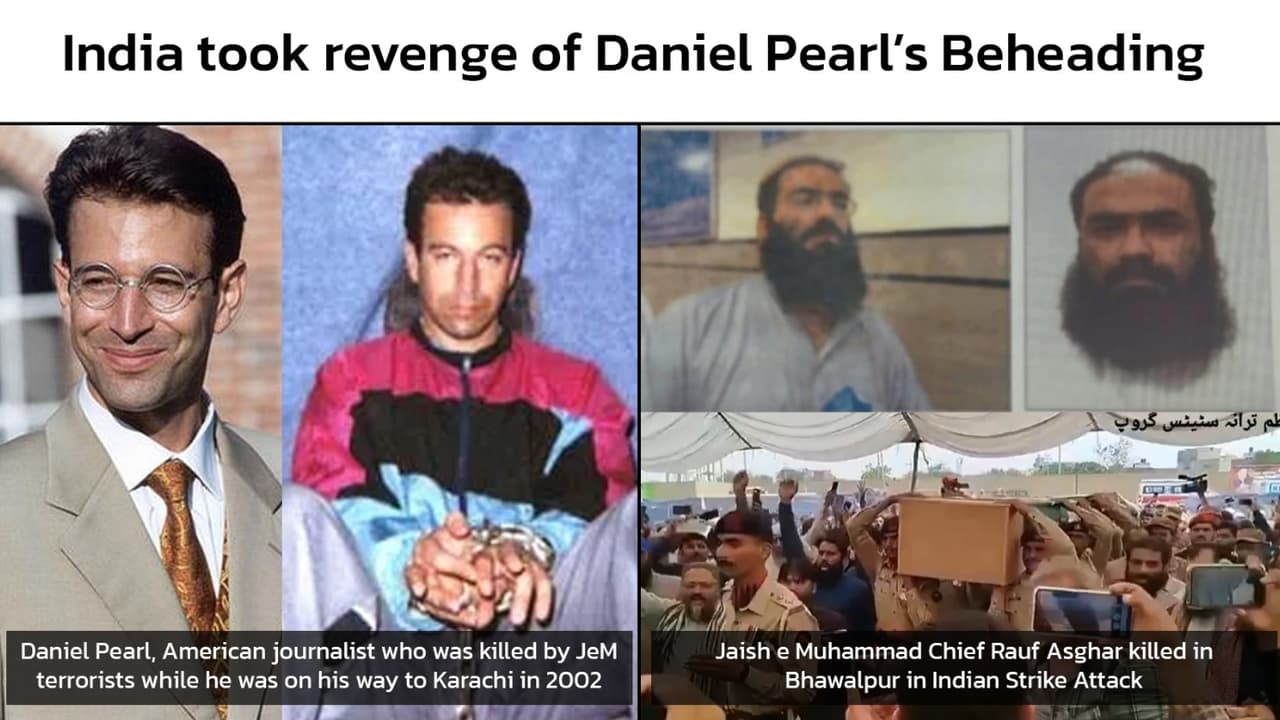Operation Sindoor not only avenged the horrific Pahalgam terror attack but also brought long-overdue justice to the family of slain American journalist Daniel Pearl, whose brutal murder in Pakistan shocked the world in 2002.
India’s precision military action - Operation Sindoor not only avenged the horrific Pahalgam terror attack but also brought long-overdue justice to the family of slain American journalist Daniel Pearl, whose brutal murder in Pakistan shocked the world in 2002.

Among the nine terror facilities targeted by the Indian Army on May 7 was a high-value target in Bahawalpur, Pakistan—a nerve centre of the dreaded Jaish-e-Mohammed (JeM). This strike has reignited global attention to a two-decade-old tragedy - the brutal murder of American journalist Daniel Pearl.
The Bahawalpur facility, once a fortress of JeM’s terror machinery, has now been reduced to rubble. This very ground holds a chilling connection to Pearl's final days. The JeM, under the command of the notorious Masood Azhar, is responsible for orchestrating a string of violent assaults, including the 2001 Indian Parliament attack and the 2019 Pulwama bombing.
Pearl, who served as the South Asia bureau chief for The Wall Street Journal, was kidnapped in Karachi in 2002 while investigating terrorist links within Pakistan’s intelligence ecosystem. A month later, a horrific beheading video surfaced, shaking the conscience of the global community. Yet for years, justice remained elusive—his killers sheltered under the protective wing of terror syndicates and their powerful Pakistani backers.
Reports following the Indian strikes claimed the elimination of Abdul Rauf Azhar, the brother of Masood Azhar and a prime accused in the hijacking of Indian Airlines Flight IC-814. It was Rauf’s orchestration of that hijacking which led to the release of Omar Saeed Sheikh, the man who would later kidnap and kill Pearl.
Pearl’s close friend and colleague, Indian-American writer-journalist Asra Nomani, reflected on this powerful twist of fate. She took to X (formerly Twitter) and wrote:
"My friend, WSJ reporter Danny Pearl, went to Bahawalpur in December 2001 with a notebook and a pen. Gen. Pervez Musharraf had just promised he was shutting down Pakistan’s militant groups after a strike by Pakistan’s terrorists against the Parliament in India, and Danny reported on the militant offices in Bahawalpur. He literally knocked on their doors. Dear Dr. @yudapearl, this story is a window into Danny’s reporting enterprise. And because people will wonder: Danny was no cowboy. This was a calculated low-risk reporting trip because no journalist had been targeted for kidnapping in Pakistan. Around that time, Danny sent me an email: ‘I’m anxious to go to Afghanistan, but I’m not anxious to die.’”
Operation Sindoor—named after the symbolic vermilion worn by married Indian women and evoking the loss in the Pahalgam attack on April 22—has become more than a counterstrike.


